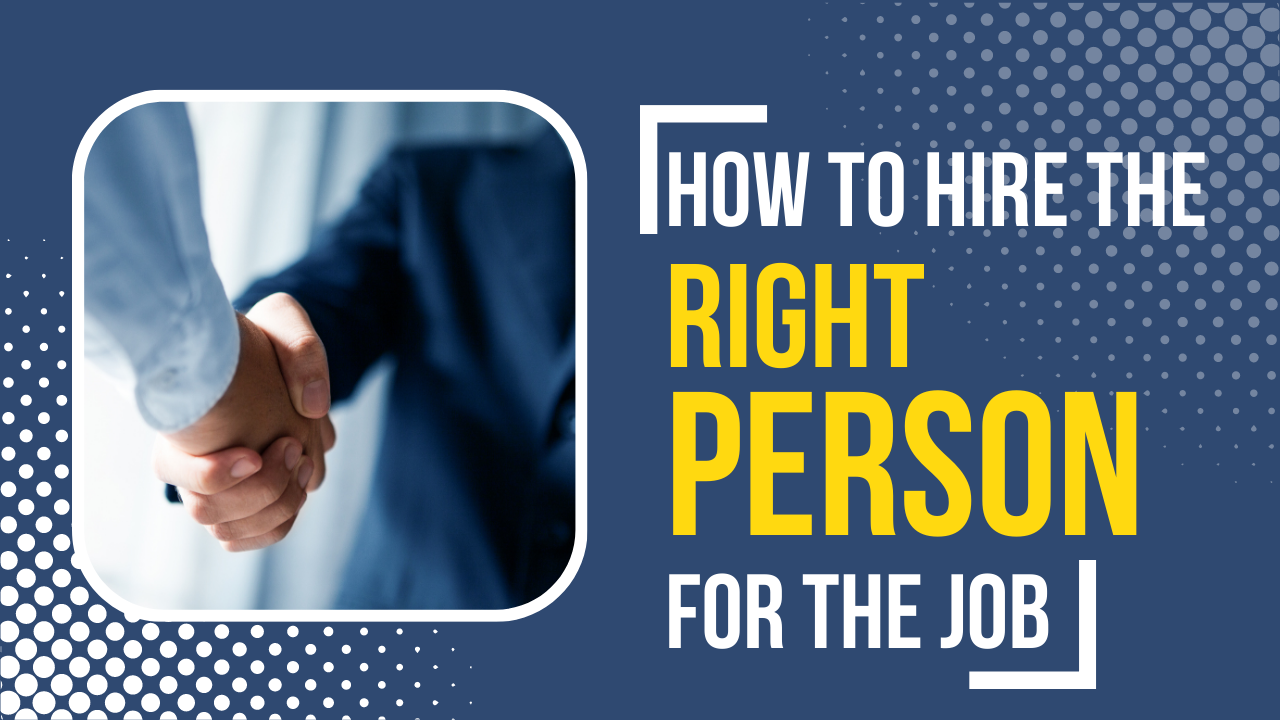How to Hire the Right Person for the Job

Bringing a new person onto your team is a big decision. Whether you're looking for someone to take some of the load off your shoulders or you're ready to expand and scale your business, having the right people in your corner will make all the difference.
But how do you know you have found the right person? How can you tell the difference between a dud and a stud? (The stud in this example is a competent, intelligent, and hardworking individual who shows up on time and doesn't microwave fish in the breakroom. Unless, of course, you're hiring for an all-male revue, in which case you want an actual stud. But we digress.)
While you can't always tell with 100% accuracy whether your newest hire will be an asset - or just an ass - there are a few things you can do to give you better odds of finding the right person.
Pre-Interview Tasks:
- Define the position: What does the job require? What are the expectations? What will the day-to-day tasks look like? Knowing this information will help you identify the skills and qualifications necessary for a candidate to be successful in this role.
- Establish a budget: Determine how much you can afford to pay ahead of time so you can negotiate if/when the time comes. Also, remember the time and money it may take to onboard and train new employees.
- Create and post your job description: There are a plethora of different job boards and avenues available, but whichever route you choose, make you've developed a job description that clearly communicates what the role entails and what the expectations are.
- Develop an application process: How will candidates apply? Will they send in their resume via email? Do you have an online application you want to use? Depending on the role you're hiring for, you could be spammed with hundreds of useless and unqualified applicants. Consider adding a caveat to the job description, like: When applying for this position, please include the word RED in the subject line. (Feel free to get more clever than that!) Now, instead of reviewing resume upon resume, you can focus on the few who actually paid attention to the job description and understand how to follow directions.
- Develop interview questions: Especially helpful if you're interviewing multiple people, having a set of standardized questions that you ask everyone will help compare and contrast the candidates against each other. It will also help you stay on track and ensure you're collecting information vital to the decision-making process. Keep questions open-ended, none of the Yes/No nonsense, and include a combination of the following:
- Behavioral questions: These questions should focus on past behavior and experiences as this is a good indicator of how they will behave in the future.
- Skilled-based questions: Does the candidate have the necessary skills to perform the job? Do their knowledge, experience, and abilities apply to the specific areas relevant to the position?
Conducting the Interviews:
- Be prepared: Review the applicant's information and make notes of anything in their job history or experience that you want to clarify.
- Be conversational: Have your pre-prepared interview questions ready, but leave room for the conversation to flow naturally.
- Maintain eye contact: Avoid the temptation to spend that time looking down at your papers and making notes. You need to evaluate their body language as well as their answers.
- Be an active listener: Listen carefully to the candidate's response, ask thoughtful follow-up questions, and avoid interrupting or talking too much.
- Turn the tables: Ask if they have any questions for you.
- Be objective: Be aware and understand your own biases and try to remain as objective as possible throughout the interview. Avoid making assumptions.
- Set a timeline: Let the candidates know when they can expect to hear from you about the position.
After the Interviews:
Reflect on these questions as you determine whether the person is the right fit.
- Are they qualified? Do they possess the necessary skills, qualifications, and experience to perform the job as described in the job description?
- Are they a cultural fit? Do their values, personality, and work style align with the company's culture?
- Will they work well with the team? Consider how the dynamics will change once they join the existing team.
- How much training will they need? Will they need a lot of hand-holding? Or will they be able to jump in with both feet after a short period of time?
- Is there growth potential? Is this someone who could grow and develop within the company?
- Reflect on their communication and interpersonal skills: Think about their answers and HOW they gave them. Did they maintain eye contact? Were they clear and concise? Did they give thoughtful responses or canned, generic answers? Were they distracted by their cellphone? Did they arrive on time? When you asked if they had any questions, were they prepared, or did they look at you like a deer caught in the headlights?
Bringing on a new employee can feel intimidating, overwhelming, and risky. But sometimes it's a necessary step you must take. A bit of preparation, objectivity, and reflection can help ease the worry and anxiety surrounding the process.



